
Space colonization is the use of outer space or celestial bodies other than Earth for permanent habitation or as extraterrestrial territory.

Deimos is the smaller and outermost of the two natural satellites of Mars, the other being Phobos. Deimos has a mean radius of 6.2 km (3.9 mi) and takes 30.3 hours to orbit Mars. Deimos is 23,460 km (14,580 mi) from Mars, much farther than Mars' other moon, Phobos. It is named after Deimos, the Ancient Greek god and personification of dread and terror.

Master of Orion is a turn-based, 4X science fiction strategy game in which the player leads one of ten races to dominate the galaxy through a combination of diplomacy and conquest while developing technology, exploring and colonizing star systems.

Space: 1889 is a tabletop role-playing game of Victorian-era space-faring, created by Frank Chadwick and originally published by Game Designers' Workshop (GDW) from 1989 to 1990. It was the first roleplaying game to feature space colonization using steam technology in the style of Jules Verne, H.G. Wells, and Arthur Conan Doyle in what would later be called steampunk. The setting of Space: 1889 has not only produced roleplaying games, but boardgames, books, miniatures and a computer game.
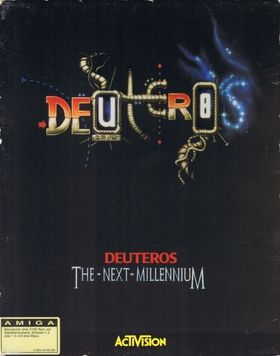
Deuteros: The Next Millennium is the sequel to the sci-fi strategy video game Millennium 2.2, published by Activision for the Amiga and Atari ST. Ian Bird designed and wrote the game, with graphics by Jai Redman and music by Matt Bates.

Triplanetary is a science fiction board wargame originally published by Game Designers' Workshop in 1973. The game is a simulation of space ship travel and combat within the Solar System in the early 21st Century.

Colonization or settlement of Mars is the theoretical human migration and long-term human establishment of Mars. The prospect has garnered interest from public space agencies and private corporations and has been extensively explored in science fiction writing, film, and art.
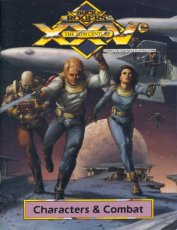
Buck Rogers XXVC is a game setting created by TSR, Inc. in the late 1980s. Products based on this setting include novels, graphic novels, a role-playing game (RPG), board game, and video games. The setting was active from 1988 until 1995.

Outpost 2: Divided Destiny is a real-time strategy computer game developed by Dynamix, released in 1997 by Sierra Entertainment. It reuses and refines some of the concepts from the original Outpost, but there is no direct continuity between the storylines or the gameplay.

Buck Rogers: Countdown to Doomsday is a role-playing video game set in the Buck Rogers XXVC universe. It was published in 1990 by Strategic Simulations for MS-DOS, Commodore 64, and Amiga. A Sega Genesis version was released in 1991. Buck Rogers: Matrix Cubed is the 1992 sequel.

In space exploration, in situ resource utilization (ISRU) is the practice of collection, processing, storing and use of materials found or manufactured on other astronomical objects that replace materials that would otherwise be brought from Earth.

Haegemonia: Legions of Iron, or Hegemonia: Legions of Iron, is a 3D real-time strategy game developed by Digital Reality for Microsoft Windows, and by Microïds for OS X, iOS, and Android.
The fictional portrayal of the Solar System has often included planets, moons, and other celestial objects which do not actually exist in reality. Some of these objects were, at one time, seriously considered as hypothetical planets which were either thought to have been observed, or were hypothesized to be orbiting the Sun in order to explain certain celestial phenomena. Often such objects continued to be used in literature long after the hypotheses upon which they were based had been abandoned.
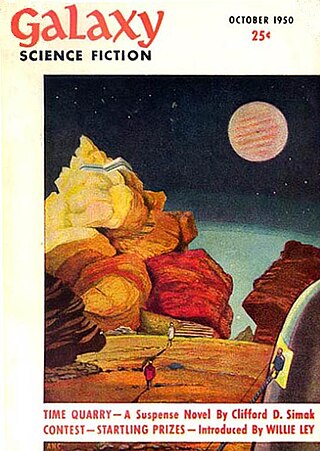
The planetary systems of stars other than the Sun and the Solar System are a staple element in many works of the science fiction genre.

UFO: Afterlight is a 2007 real-time tactics/turn-based strategy video game and the third in Altar Games' UFO series. Like its predecessors UFO: Aftermath and UFO: Aftershock, it combines squad-level tactical combat with overlying strategic elements inspired by the 1994 classic X-COM: UFO Defense.

Mines of Titan is a single-player role-playing video game, developed by Westwood Associates, and released by Infocom in 1989 for Apple II, Commodore 64 and MS-DOS.
The Planetary series of stories by Stanley G. Weinbaum is a series of short stories, published in Wonder Stories and Astounding Stories in the 1930s, which are set upon various planets and moons of the Solar System.
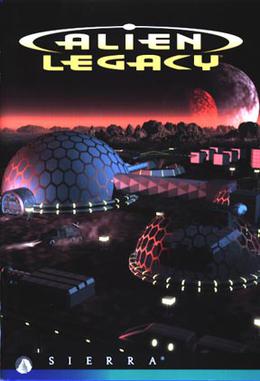
Alien Legacy is a sci-fi strategy game developed by Ybarra Productions and published by Sierra On-Line in 1994 for MS-DOS.

Nemesis Games is a 2015 science fiction novel by James S. A. Corey, the pen name of Daniel Abraham and Ty Franck, and the fifth book in their The Expanse series. It is the sequel to Cibola Burn. The cover art is by Daniel Dociu. Nemesis Games received has positive reviews. The novel has been referred to as "Corey’s 'Empire Strikes Back'".
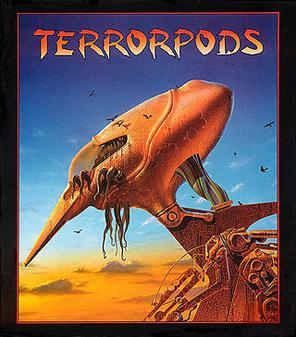
Terrorpods is a 1987 shooting game with simple business simulation by Psygnosis. Originally developed for the Amiga and Atari ST, it was later ported to the Commodore 64, ZX Spectrum, Amstrad CPC and MSX.


















